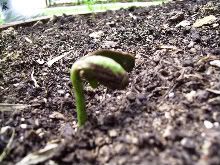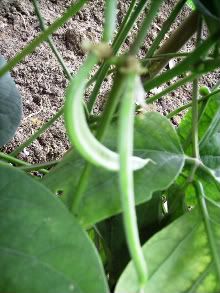Let me sumarise what "BBQ Char Cool" have said and let' s work from there.
'It is because of high chemical potential energy that enables it to burn for so long.'
Posted by Yu Ling
' The most common types of charcoal used are lump charcoal and briquettes. Briquettes are convenient, inexpensive source of fuel. It can burn more consistenly and longer then lump charcoal but not quite as hot. Charcoal can be burnt in power stations to turn generators to produce electricity. It can also be used to cook.
The porosity of activated charcoal accounts for its ability to readily absorb gases and liquids; charcoal is often used to filter water or absorb odors. Charcoal was also consumed in the past as dietary supplement for gastric problems in the form of charcoal biscuits.'
Posted by Xin Yi
'Disadvantages of using charcoal are that it is not a clean fuel. Charcoal transport generates more ash than LPG, Kerosene and Gelfuel.'
Posted by Pauline
'From what I researched, charcoal is a blackish residue consisting of impure carbon obtained by removing water and other volatile constituents from animal and vegetation substances. The resulting soft, brittle, lightweight, black, porous material resembles coal and is 85% to 98% carbon with the remainder consisting of volatile chemicals and ash.'
Posted by Renise
Let' s stick to the instructions and give better awnswers!
How To Soar in PSLE - BTPS Way!!
Interact with complex questions / graphs / pictures to pick up valuable clues (don't highlight - just use your pen to underline words or scribble notes)
Start with Booklet A and do it meticulously with full focus - explore all 4 distractors before making final choice.
MANAGE your TIME - to score well, you need to try to finish ALL questions.
Specific answers = answers that are relevant to question.
When confused, choose any of the following strategies:
1. Ask, "What Science idea is being used in question?"
2. Pose other questions to clarify your thoughts
3. COMPARE to another set-up
4. COMPARE to a reverse situation
5. Connect to your knowledge in life (yes, you do have lots of prior / other knowledge)
6. Break down your answer in steps before crafting final answer.
Common problems with wrong answers:
*Answers are generic/vague and do not connect to that specific question
*Answers are not scientific and do not explain using Science ideas
*Answers do not make use of data provided when asked
*Answers did not make comparisons - use words like more/most etc..when asked
BTPS supports all P6 in achieving their PSLE GOALS!!
Start with Booklet A and do it meticulously with full focus - explore all 4 distractors before making final choice.
MANAGE your TIME - to score well, you need to try to finish ALL questions.
Specific answers = answers that are relevant to question.
When confused, choose any of the following strategies:
1. Ask, "What Science idea is being used in question?"
2. Pose other questions to clarify your thoughts
3. COMPARE to another set-up
4. COMPARE to a reverse situation
5. Connect to your knowledge in life (yes, you do have lots of prior / other knowledge)
6. Break down your answer in steps before crafting final answer.
Common problems with wrong answers:
*Answers are generic/vague and do not connect to that specific question
*Answers are not scientific and do not explain using Science ideas
*Answers do not make use of data provided when asked
*Answers did not make comparisons - use words like more/most etc..when asked
BTPS supports all P6 in achieving their PSLE GOALS!!
Subscribe to:
Post Comments (Atom)
Science Around Me (SAM)
SAM is a Science journal that allows pupils to express themselves in their favourite ways about Science.
SAM is another great opportunity for pupils to THINK and TALK Science in a medium that is customised to their learning styles.
SAM allows teachers to informally assess understanding of the child and clarify misconceptions in their learning.
SAM is another great opportunity for pupils to THINK and TALK Science in a medium that is customised to their learning styles.
SAM allows teachers to informally assess understanding of the child and clarify misconceptions in their learning.
Factors Affecting the Environment by Gog Ru Yan - 6G

When Ice Changes into Water by Goh Chee Yan - 5G
Do you wonder whether the mass of ice changes when it melts into water. Try this out:
1. Put a few ice cubes into a plastic bag
2. Tie the mouth of the bag tightly
3. Weigh the bag of ice cubes (if there is condensation outside the bag, wipe it dry before weighing)
4. Place the bag in the sun
5. When ice has melted, wipe the outside of the bag dry (refer to step 3)
6. Weigh the bag
You will discover that the mass of the bag remains the same!
There is no change in mass when ice melts!!
1. Put a few ice cubes into a plastic bag
2. Tie the mouth of the bag tightly
3. Weigh the bag of ice cubes (if there is condensation outside the bag, wipe it dry before weighing)
4. Place the bag in the sun
5. When ice has melted, wipe the outside of the bag dry (refer to step 3)
6. Weigh the bag
You will discover that the mass of the bag remains the same!
There is no change in mass when ice melts!!
Simple Steps to fight Dengue by Elizabeth Wu 4C







1 comment:
Acording to my research, activated charcoal is used in water filters, medicines that selectively remove toxins, and chemical purification processes. Activated charcoal is carbon that has been treated with oxygen. The treatment results in a highly porous charcoal. These tiny holes give the charcoal a surface area of 300-2,000 m2/g, allowing liquids or gases to pass through the charcoal and interact with the exposed carbon. The carbon adsorbs a wide range of impurities and contaminants, including chlorine, odors, and pigments. Other substances, like sodium, fluoride, and nitrates, are not as attracted to the carbon and are not filtered out. Because adsorption works by chemically binding the impurities to the carbon, the active sites in the charcoal eventually become filled. Activated charcoal filters become less effective with use and have to be recharged or replaced.
Post a Comment